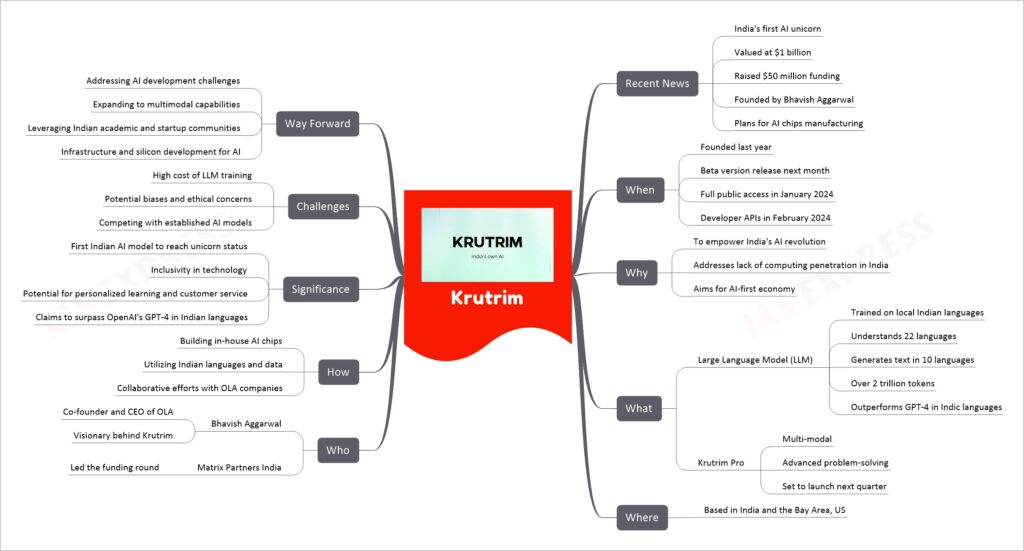Krutrim

Krutrim, an AI startup founded by Bhavish Aggarwal, has emerged as India’s first AI unicorn, achieving a valuation of $1 billion with a $50 million funding round. It represents a significant step for India’s participation in the global AI landscape, aiming to revolutionize the AI market by focusing on local Indian languages and data. Krutrim’s approach includes developing a large language model that understands multiple Indian languages, plans for an AI chip manufacturing capability, and creating a multimodal advanced version named Krutrim Pro. The venture signifies India’s ambition to be an AI-first economy, addressing the existing gap in computing penetration and aiming to make technology inclusive and accessible across diverse Indian languages.

